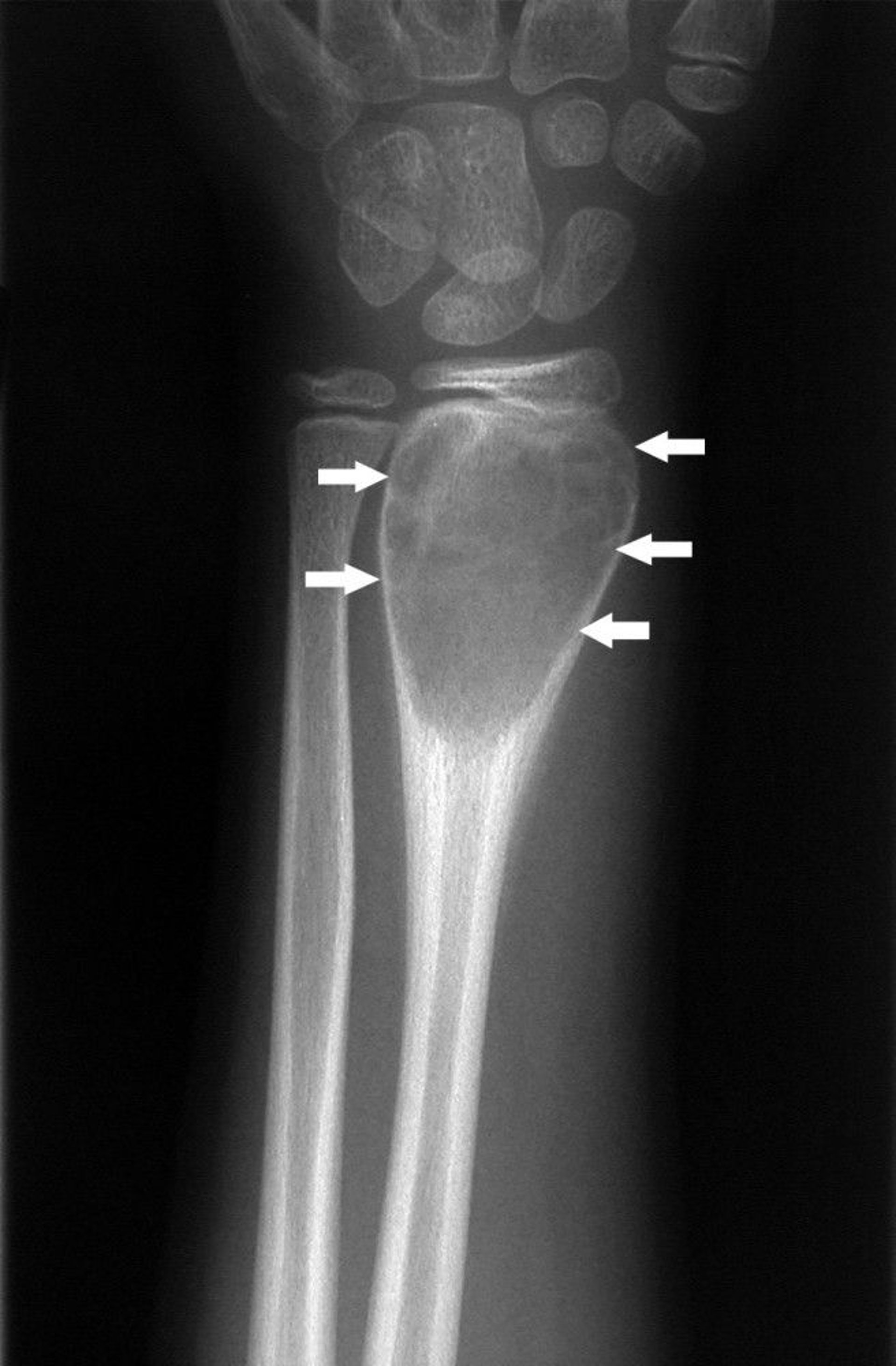Topic Resources
Many noncancerous (benign) bone abnormalities may resemble bone tumors but are not.
(See also Overview of Bone Tumors.)
Aneurysmal bone cysts
Aneurysmal bone cysts usually develop before people reach age 25, and the cause is not known. These cysts are made up of multiple blood-filled sacs that are packed together. These cysts usually occur near the inside edges of the long bones (upper arm and thigh bones), but almost any bone may be affected. The cysts tend to grow slowly. Pain and swelling are common. The cyst may be present for a few weeks to a year before diagnosis.
Image courtesy of Michael J. Joyce, MD, and Hakan Ilaslan, MD.
To diagnose aneurysmal bone cysts, doctors do x-rays and magnetic resonance imaging (MRI). Doctors also remove a tissue sample for examination under a microscope (biopsy).
Surgical removal of the entire cyst is the most successful treatment, but sometimes the cysts return, particularly if they are not removed completely. An aneurysmal bone cyst can also be injected with doxycycline (an antibiotic), albumin, and air that forms an injectable foam. More than 1 or 2 injections may be needed. Other formulations that contain alcohol have also been used. Radiation should be avoided when possible because cancerous tumors occasionally develop later. However, Surgical removal of the entire cyst is the most successful treatment, but sometimes the cysts return, particularly if they are not removed completely. An aneurysmal bone cyst can also be injected with doxycycline (an antibiotic), albumin, and air that forms an injectable foam. More than 1 or 2 injections may be needed. Other formulations that contain alcohol have also been used. Radiation should be avoided when possible because cancerous tumors occasionally develop later. However,radiation may be the treatment of choice for cysts in the spine that cannot be treated surgically or injection and are putting pressure on the spinal cord.
Unicameral bone cysts (simple bone cysts)
Unicameral bone cysts occur near the growth plates in the arms or legs in children. Growth plates are what enable children to grow.
The cysts often cause nearby bones to thin, which can lead to a break (fracture). Cysts that are less than 2 inches (about 5 centimeters) long or wide may heal and may disappear as the fracture heals. Cysts that are more than 2 inches long or wide, particularly in children, may require treatment. However, a better predictor of the risk of fracture is a cyst size greater than 85% of the diameter of the bone or a bony shell less than 0.5 millimeters.
To diagnose unicameral bone cysts, doctors do x-rays. Most of the time, x-rays are enough to make the diagnosis, but sometimes other imaging tests, such as magnetic resonance imaging (MRI) or occasionally computed tomography (CT), are done.
Image courtesy of Michael J. Joyce, MD, and Hakan Ilaslan, MD.
These cysts are often treated with injections of corticosteroids (often repeatedly), with processed bone putty, or with synthetic bone substitutes. Sometimes treatment is surgery to remove the contents of the cyst from the bone by scraping it with a scoop-shaped instrument (curettage) and transplantation of bone from one site to another (bone grafting) or use of processed bone from another person (allograft). Regardless of treatment, the cyst remains or returns in about 10 to 15% of people.
Drugs Mentioned In This Article




